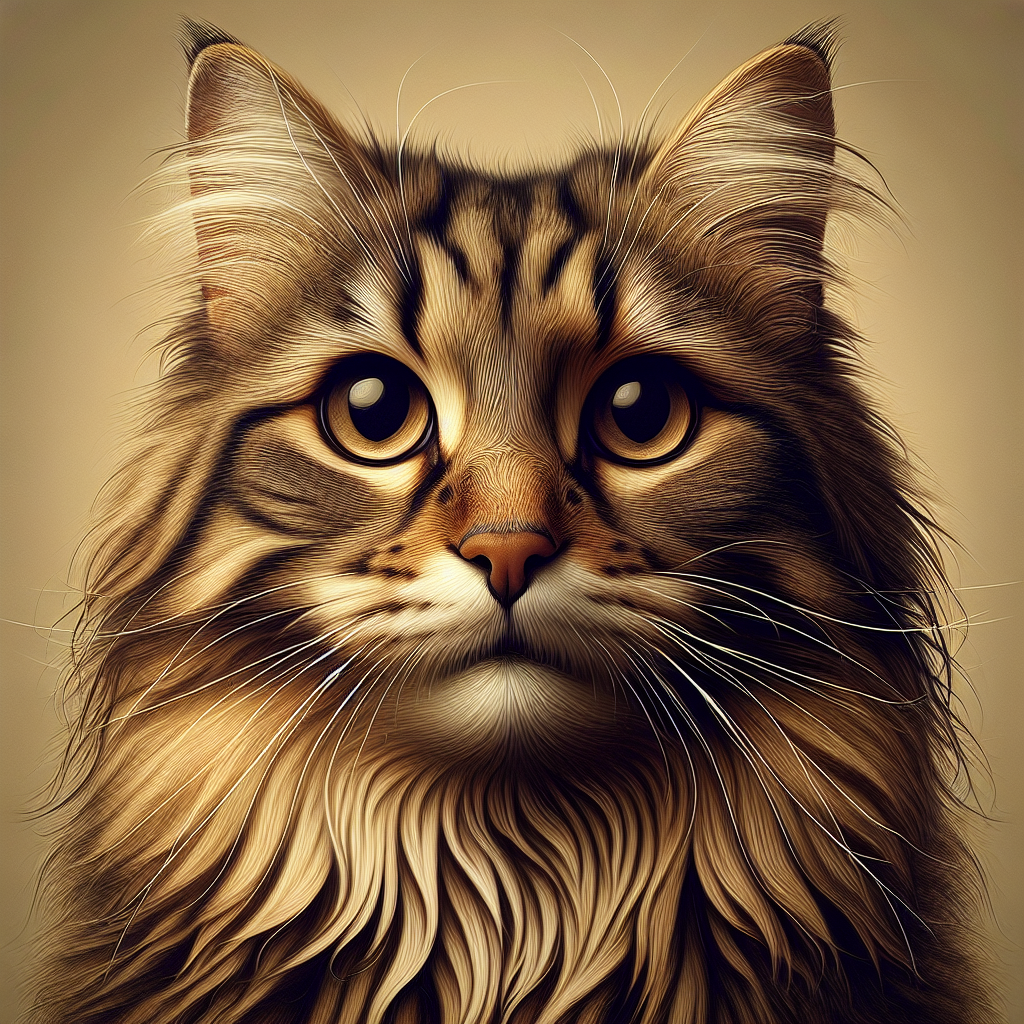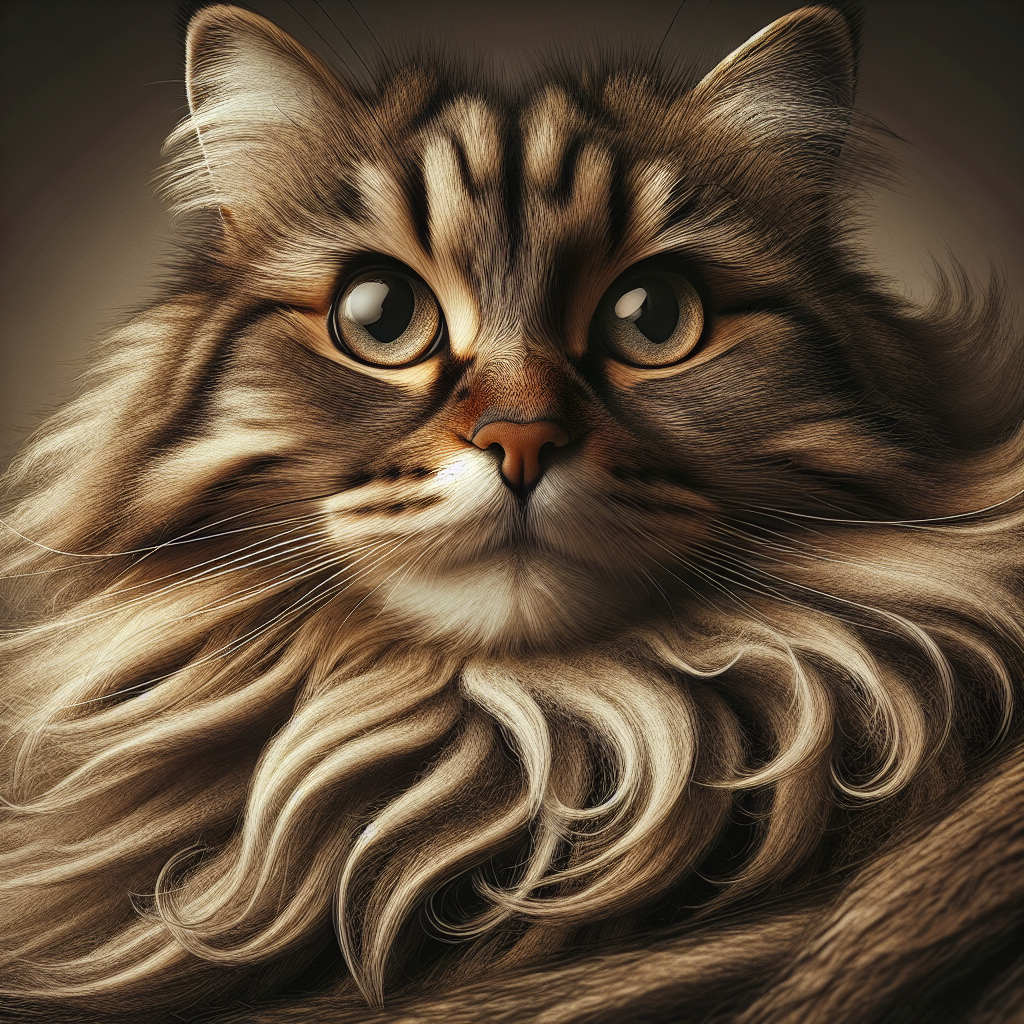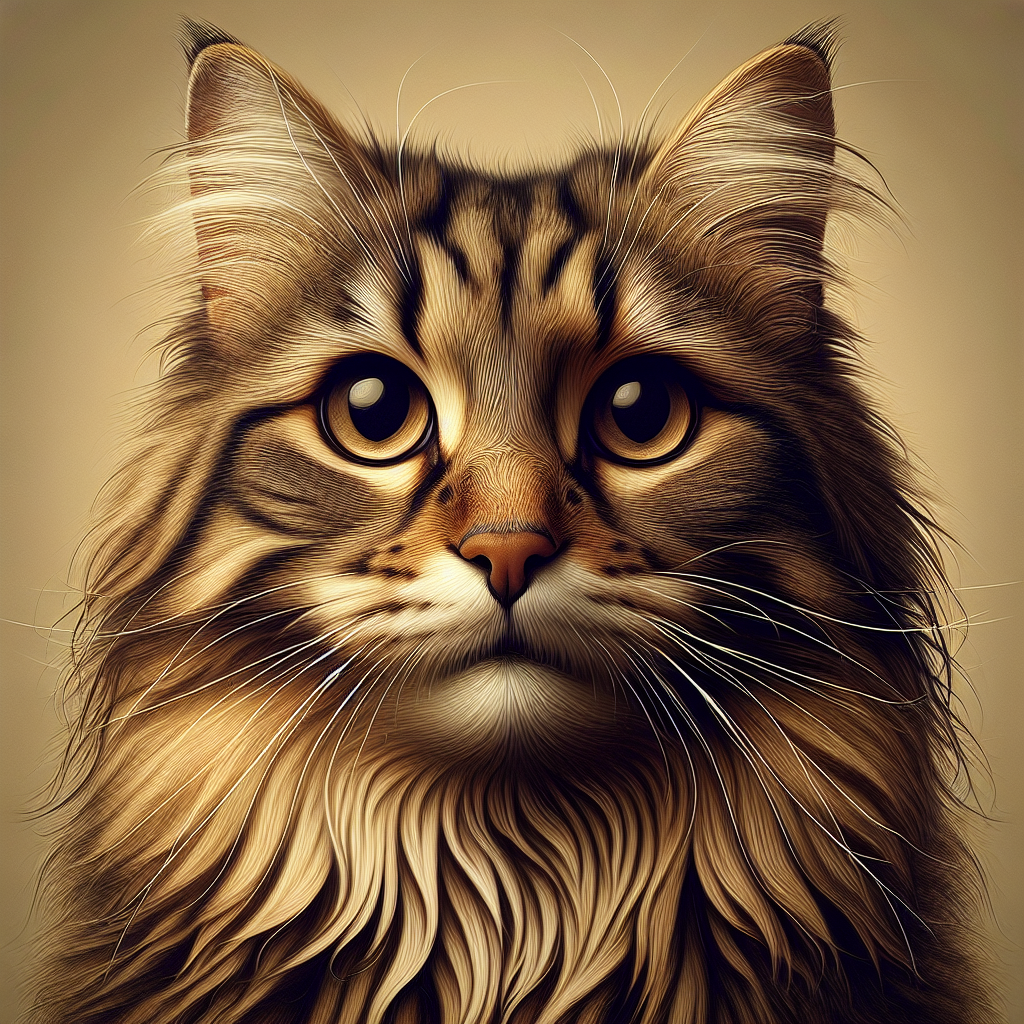If you’ve ever found yourself admiring the elegant and charming presence of tabby cats, you might have also marveled at their distinct fur. Tabby cats, known for their beautiful coat patterns, exhibit varying hair lengths that contribute to their overall appeal. Whether you’re curious about their short and sleek coats or their plush and fluffy manes, understanding the typical hair length of tabby cats adds yet another layer to appreciating their unique beauty.

The Typical Hair Length of Tabby Cats
Tabby cats, one of the most beloved and popular cat breeds, come in a variety of hair lengths. Whether you prefer short, medium, or long hair, there is a tabby cat that will steal your heart. In this comprehensive article, we will explore the different hair lengths of tabby cats, the factors that influence their hair length, their characteristics, grooming needs, common health issues, and recommended hair care products. So, let’s dive in and learn more about these delightful feline companions!
Short Hair Tabby Cats
Short hair tabby cats are known for their sleek and low-maintenance fur. With a dense and smooth coat, they have a charmingly plush appearance. Their hair length is typically short, measuring around 1/2 to 1 inch in length. This shorter hair means that they shed less and require minimal grooming compared to their long-haired counterparts.
Description
Short hair tabby cats have a smooth and velvety coat that lies close to their body. Their fur can come in various colors, including classic tabby patterns such as mackerel, spotted, or ticked. Their hair has a lustrous shine and is incredibly soft to the touch.
Grooming
When it comes to grooming, short hair tabby cats are a breeze to maintain. They require regular brushing to help remove loose hair and keep their coat looking sleek and healthy. Additionally, occasional baths are enough to keep them clean and smelling fresh. With their shorter hair, they are less prone to matting and tangles.
Common Breeds
Some of the popular short hair tabby cat breeds include the American Shorthair, British Shorthair, and Abyssinian. These breeds showcase the stunning tabby patterns and delightful personalities that are characteristic of this hair length.
Medium Hair Tabby Cats
Medium hair tabby cats strike a perfect balance between the low-maintenance short hair and the luxurious length of long hair. With their moderately sized coat, they offer a touch of elegance and style. Their hair length typically ranges from 1 to 2 inches, giving them a slightly more layered and textured appearance.
Description
Medium hair tabby cats have a thick and plush coat that enhances their natural beauty. Their fur may display intricate tabby patterns with different colors blending harmoniously. The additional hair length gives them a fuller coat, adding depth and dimension to their overall appearance.
Grooming
Medium hair tabby cats require regular grooming to maintain their glamorous looks. Brushing their fur at least twice a week helps prevent matting and tangling. It also removes loose hair and reduces the risk of hairballs. Occasional baths are recommended to keep their coat clean and healthy.
Common Breeds
Some popular medium hair tabby cat breeds include the Maine Coon, RagaMuffin, and Siberian. These breeds showcase the stunning combination of medium hair and tabby patterns, offering a delightful blend of beauty and playfulness.
Long Hair Tabby Cats
Long hair tabby cats exude an undeniable beauty and elegance with their luxurious and flowing coats. Their hair length typically exceeds 2 inches, and their fur adds a touch of sophistication to their overall appearance. While their long hair requires more maintenance, the stunning results are worth every effort.
Description
Long hair tabby cats have a majestic coat that cascades beautifully, emphasizing their graceful movements. Their fur showcases various tabby patterns, often with remarkable color combinations that make them truly eye-catching. The extra hair length adds a level of sophistication and charm to their already charismatic presence.
Grooming
Due to their long hair, tabby cats with this hair length require more extensive grooming. Regular brushing is vital to prevent mats and tangles from forming. Daily brushing is recommended to maintain their coat’s health, as well as to minimize shedding and hairballs. Baths should be done occasionally with cat-friendly shampoos to keep their fur clean and free from dirt or debris.
Common Breeds
Long hair tabby cat breeds that capture the hearts of cat lovers include the Persian, Maine Coon, and Norwegian Forest Cat. These breeds showcase breathtaking long hair and stunning tabby patterns, making them true showstoppers wherever they go.

Grooming Needs of Tabby Cats
Regardless of the hair length, all tabby cats require proper grooming to keep their fur healthy, shiny, and tangle-free. Regular grooming not only helps maintain their appearance but also promotes bonding and detects any potential health issues early on.
Brushing
Brushing is an essential part of tabby cat grooming, regardless of their hair length. It helps remove loose hair, prevents mats and tangles, and stimulates blood circulation. Choose a brush suitable for your cat’s hair length and texture, and gently brush their fur using long, smooth strokes. Pay attention to areas where mats commonly form, such as behind the ears and under the armpits.
Bathing
While cats are typically meticulous self-groomers, occasional baths are necessary for optimal hygiene. Use cat-specific shampoos that are gentle on their skin and fur. It’s important to remember that cats may be resistant to water, so ensure a safe and calm environment during bathing. Consider using waterless cat shampoos or wipes as an alternative to full baths for cats who are particularly averse to water.
Trimming
Regular trimming of your tabby cat’s nails is crucial to prevent overgrowth and discomfort. Invest in quality cat nail clippers or seek professional help to ensure a safe and stress-free trimming experience. Additionally, if you have a long hair tabby, occasional trimming of the fur around their hindquarters can help maintain cleanliness.
Regular Check-ups
Routine veterinary check-ups are vital for maintaining your tabby cat’s overall health. During these visits, your veterinarian can assess your cat’s coat and skin condition, provide preventive care such as vaccinations and parasite control, and address any grooming concerns you may have.
Tips for Proper Tabby Cat Grooming
Now that you are familiar with the grooming needs of tabby cats, here are some helpful tips to ensure you provide the best care for your feline friend.
Brushing Techniques
For shorter hair tabby cats, a soft-bristle brush or a rubber grooming glove is usually sufficient. Use gentle yet firm strokes to remove loose hair effectively. Medium and long hair tabby cats may require slicker brushes or combs with wider teeth to penetrate their thicker coats. Remember to be patient and reward your cat with treats or praise to make grooming a positive experience.
Bathing Guidelines
When bathing your tabby cat, ensure the water is at a comfortable temperature, and use a non-slip mat to provide stability. Place a towel at the bottom of the tub or sink to prevent your cat from slipping. Use a cat-specific shampoo and gently massage it into their fur, avoiding the face and ears. Rinse thoroughly and dry them with a warm towel afterward. Reward your cat with treats and affection to reinforce positive associations with bathing.
Trimming Recommendations
When trimming your tabby cat’s nails, find a quiet and well-lit area where you won’t be interrupted. Have treats nearby as a reward after each successful trimming session. Hold your cat’s paw gently but firmly, and trim only the pointed tip of each nail, being cautious not to cut the quick. If you are unsure or uncomfortable with nail trimming, consult a professional groomer or your veterinarian.
Preventative Care
Aside from regular grooming, maintaining your tabby cat’s overall health is crucial. Keep their vaccinations up to date, provide a balanced diet suitable for their age and needs, and regularly administer preventive treatments for fleas, ticks, and parasites. Keep an eye out for any changes in behavior, appetite, or the appearance of their coat, and seek veterinary attention if you notice anything out of the ordinary.
Common Health Issues for Tabby Cats
While tabby cats are generally healthy and robust, they may be prone to certain health issues. Being aware of these conditions can help you detect early signs and provide timely care for your beloved feline companion.
Dermatological Problems
Tabby cats, like any other breed, can experience various skin-related issues such as allergies, irritations, or fungal infections. These conditions may manifest through itchiness, redness, sores, or hair loss. Regular grooming and monitoring your cat’s skin condition can help identify these problems early, allowing for prompt veterinary intervention.
Hairballs
Due to their fastidious grooming habits, tabby cats can develop hairballs. These masses of fur can form in their stomach and cause discomfort or even blockages. Regular brushing helps reduce the amount of hair ingested, while specialized diets or hairball control supplements can aid in the natural elimination of these troublesome hairballs.
Flea Infestation
Fleas are a common concern for cats, including tabby cats. Infestations can lead to itching, irritation, and the transmission of diseases. Prevention is key to combat fleas, so ensure your cat is on a flea control regimen recommended by your veterinarian. Regular grooming can also help in early detection of fleas or their droppings.
Allergies
Tabby cats, like any other breed, can develop allergies to certain substances, such as environmental allergens or certain foods. Allergies may present themselves through skin irritations, excessive scratching, or respiratory symptoms. Consult with your veterinarian if you suspect your tabby may be suffering from allergies, as they can provide guidance on identifying triggers and prescribing suitable treatments.
Recommended Hair Care Products for Tabby Cats
To ensure proper hair care for your tabby cat, consider using the following products specifically designed for their needs.
Shampoos and Conditioners
Choose cat-specific shampoos and conditioners that are gentle on their skin and fur. Look for products that address specific needs such as dryness, dandruff, or allergies. Some brands offer formulations tailored for different hair types and lengths, ensuring optimal results for your tabby cat’s coat.
Brushes and Combs
Invest in high-quality brushes and combs suitable for your tabby cat’s hair length. Slicker brushes work well for longer hair, while soft-bristle brushes or rubber grooming gloves are ideal for shorter hair. Additionally, deshedding tools may be beneficial for tabby cats prone to excessive shedding.
Pet Wipes
Pet wipes are a convenient solution for in-between baths or for spot cleaning specific areas. They are useful in maintaining cleanliness and hygiene, particularly for cats that dislike water or have difficulty grooming certain areas themselves. Look for wipes specifically designed for cats, and opt for gentle and hypoallergenic options.
Supplements
Certain dietary supplements can promote healthy skin and coat in tabby cats. Omega-3 fatty acids, for example, are known to support skin health and reduce inflammation. Consult your veterinarian before introducing any supplements into your cat’s diet, as they can guide you on appropriate dosages and brands.
Conclusion
Tabby cats are beloved for their charming personalities and distinctive coat patterns. Whether your tabby cat has short, medium, or long hair, proper grooming is essential for their overall well-being. Regular brushing, baths when necessary, trimming their nails, and routine veterinary check-ups are key components of maintaining their coat’s health and preventing potential health issues. By understanding the specific needs of your tabby cat’s hair length and following the tips and recommendations mentioned in this article, you can ensure that their fur remains shiny, healthy, and a source of pride for both you and your feline companion.

